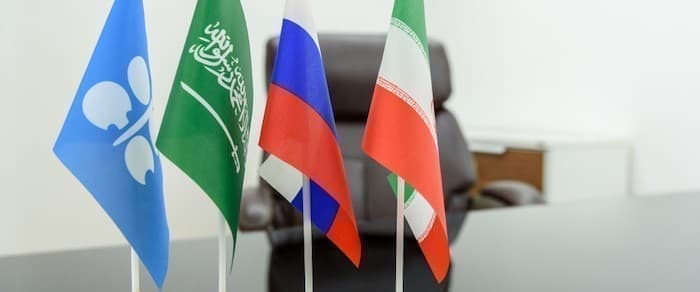The OPEC+ decision to stick to its oil production plans early next year came as a surprise to many observers, considering the market noise leading up to last week’s meeting that an oversupply was looming.
Going forward, how OPEC+ delivers on the planned increase in monthly production will be critical—more so than the nameplate supply boost it has agreed to each month, Reuters columnist Clyde Russell notes.
OPEC+ Meeting Calms Market Roiled By Omicron Fears
Last Thursday, OPEC+ surprised the market by sticking to its production plan to add 400,000 barrels per day (bpd) to its production in January.
However, in a rare wording for such meetings, OPEC said that the wider OPEC+ group “agree that the meeting shall remain in session pending further developments of the pandemic and continue to monitor the market closely and make immediate adjustments if required.”
Here, the alliance left the door open to revisiting the planned supply boost before the next regular meeting on January 4, 2022, should the market fears of Omicron denting demand materialize.
The stated flexibility to act immediately in case demand comes under serious threat calmed the anxious traders, who had priced in a massive drop in global oil demand due to Omicron, which hasn’t been seen yet, and may not be seen at all.
Oil prices erased the losses of the initial knee-jerk reaction to the outcome of the meeting and bounced back just hours after OPEC+ said it planned to continue adding supply to what looks like would be an oversupplied market in early 2022.
‘Market Stability’
The OPEC+ decision also sent a message that the group is playing the long game. While it signaled readiness to act immediately, the group is staying the course and choosing stability over a hasty reaction to Omicron, which could be just a bump on the road, not a full-scale train wreck with lockdowns potentially decimating oil demand, as the market seems to have initially feared.
By sticking to the plan to ease the cuts, OPEC+ also dialed down the tension with the major oil-consuming nations - led by the United States - who had already announced releases from their strategic petroleum reserves and have openly expressed dissatisfaction with high oil and gasoline prices.
OPEC+ also disproved some analysts who had expected the group would seek to defend $80, or at least $75 oil, and pause the monthly production increases.
Keeping U.S. Shale In Check
Last week’s decision from the alliance may have brought down a notch or two the tension with the U.S. Administration, but it also reminded the U.S. shale patch who is in charge of the oil market, just as American oil producers are drafting their capital budgets for 2022. U.S. oil firms are set to increase production next year, but they may not spend too much on new drilling activity, with oil slipping to $70 from $80 a barrel in just a few days and Omicron still creating uncertainty about demand.
By not defending $80 oil at all costs, OPEC+ is not giving U.S. producers free rein to boost production too much next year. U.S. shale has been careful with spending plans over the past year and a half and will likely continue to be careful - for the most part - next year, too.
“The recent slump in WTI back below $70 and even lower further out the curve may reduce the threat from US producers who could now adopt more cautious spending plans for 2022,” Ole Hansen, Head of Commodity Strategy at Saxo Bank, said on Friday.
OPEC+ Undershoots Production Targets Anyway
Another bullish factor for the oil market is the fact that while OPEC+ says its production should rise by 400,000 bpd each month, the actual supply increase is smaller as some African OPEC members have been significantly underperforming because of a lack of spare capacity and investments.
ADVERTISEMENT
“Our analysis finds that OPEC+ holds much less spare capacity than some key institutions and many market participants assume. Moreover, the spare capacity is not evenly distributed within the group, and various countries face obstacles to raising production, complicating assessments of the actual amount of supply that OPEC+ will add over the next year,” consultancy Energy Aspects said in November, before last week’s meeting.
OPEC continued to raise its oil production in November under the OPEC+ deal, but the cartel continued to pump less crude than its share of the monthly increase, the monthly Reuters survey found last week.
Between August and November, OPEC+ added 1.04 million bpd in total to its production, which was nearly 600,000 bpd below the target for the four months, according to Reuters surveys cited by Clyde Russell.
If OPEC+ members continue to struggle to pump to their quotas, the group will continue to add less supply on the market than it has said it would. In the coming weeks, actions will speak louder than words about whether OPEC+ will deliver the actual increase in production. Yet, OPEC+ being OPEC+, the group’s words are also set to impact market sentiment, as they have always done.
By Tsvetana Paraskova for Oilprice.com
More Top Reads From Oilprice.com:
- The Multi-Billion Dollar Start Of A Nuclear Fusion Boom
- Natural Gas Bulls Hit Hard By Warm Weather Reports
- The Oil Price Crash Has Taught U.S. Shale A Valuable Lesson


















